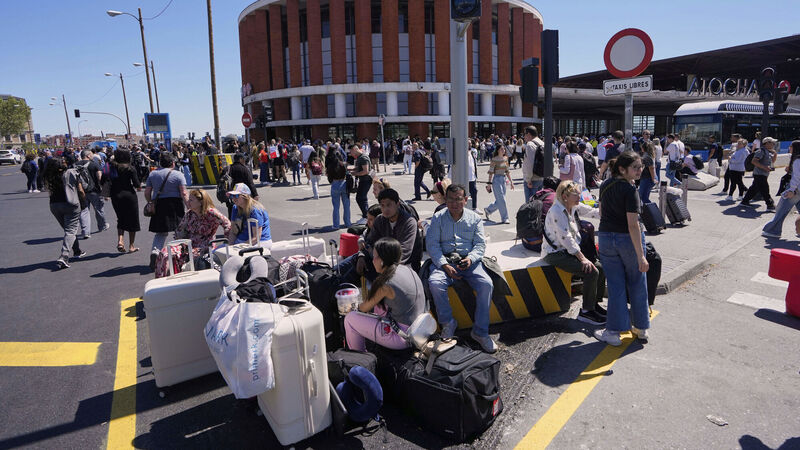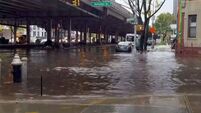What caused the blackout in Spain and Portugal and did renewable energy play a part?

Passengers roam outside Atocha train station during the nationwide power outage in Madrid on Monday. Picture: AP Photo
Spain and Portugal suffered the worst blackout in living memory in Europe this week. About 55m people were affected and it lasted more than half a day. Some have blamed renewables and net zero emissions targets, as the two countries boast high levels of wind and solar on their electricity grid and lead Europe in the technologies. But is this true?
Some initial reports suggested a “rare atmospheric phenomenon” may have been to blame, citing a statement attributed to the Portuguese grid operator REN. In extreme weather, such as storms and heatwaves, the cables that carry electricity overhead can oscillate, which can cause problems with the conductors, particularly on older and less well maintained equipment. However, the weather in Spain was normal on Monday. On Tuesday, REN denied it had been responsible for the statement, but did not give further details.
The Portuguese government blamed an unexplained power transmission issue. “In Portugal, we have no information related to a cyber-attack or a hostile act at this stage,” said a government spokesperson, António Leitao Amaro, who told CNN Portugal there seemed to have been an issue in Spain’s power transmission.
Spain pointed the finger at a breakup in its connection to France. Experts have said it could take days to identify the cause.
Spain and Portugal lead the EU in renewables and were sourcing about 80% of their electricity from solar and wind when the blackout hit on Monday.
Some commentators speculated that the grid could have been overloaded by the amount of wind and sun available, as renewables are more intermittent than other forms of energy and sudden fluctuations in sunshine or wind can cause problems.
However, this does not appear to be the case. Daniel Muir, a senior European power analyst at S&P Global, said: “The nature and scale of the outage makes it unlikely that the volume of renewables was the cause, with the Spanish network more often than not subject to very high volumes of such production.” The Spanish grid operator said on Tuesday that there had been two events akin to loss of power generation followed by a massive loss of renewable power, which had destabilised the grid. They said it was “very possible” the first of these events was a sudden loss of solar power.
Blackouts can happen regardless of what type of energy powers the grid. In 2003, there was a significant blackout in London when the grid was primarily powered by fossil fuels. It was caused by a failed transformer and an incorrectly installed protection relay.
In 2003, a problem with a hydroelectric power line between Italy and Switzerland caused a major outage across the Italian peninsula for about 12 hours.
The Spanish grid is undergoing upgrades as it is unable to carry the renewable energy required. Experts have said that the grid upgrades have not matched the pace of renewables being brought online.
Gas and nuclear-powered electricity grids have high inertia, which is a term for the resistance of a grid to frequency changes. Renewable grids have low inertia, which when unmitigated can cause them to be less resilient to sudden shocks.
Battery storage and other technologies such as super-capacitors and flywheels can substitute for traditional forms of inertia by providing capacity in the event of a sudden change in frequency. These can provide breathing space for the operator in times of shock.
So if large volumes of renewables are going to be loaded on to the grid, it needs to be properly designed and invested in.
Grids need to be resilient against blackouts but governments need to balance cost against risk, as disaster-proofing the grid is expensive. Electrical grids are interconnected across countries to lower the costs and increase reliability, but this can mean a problem in one area can cause a domino effect across the entire zone.
CLIMATE & SUSTAINABILITY HUB













